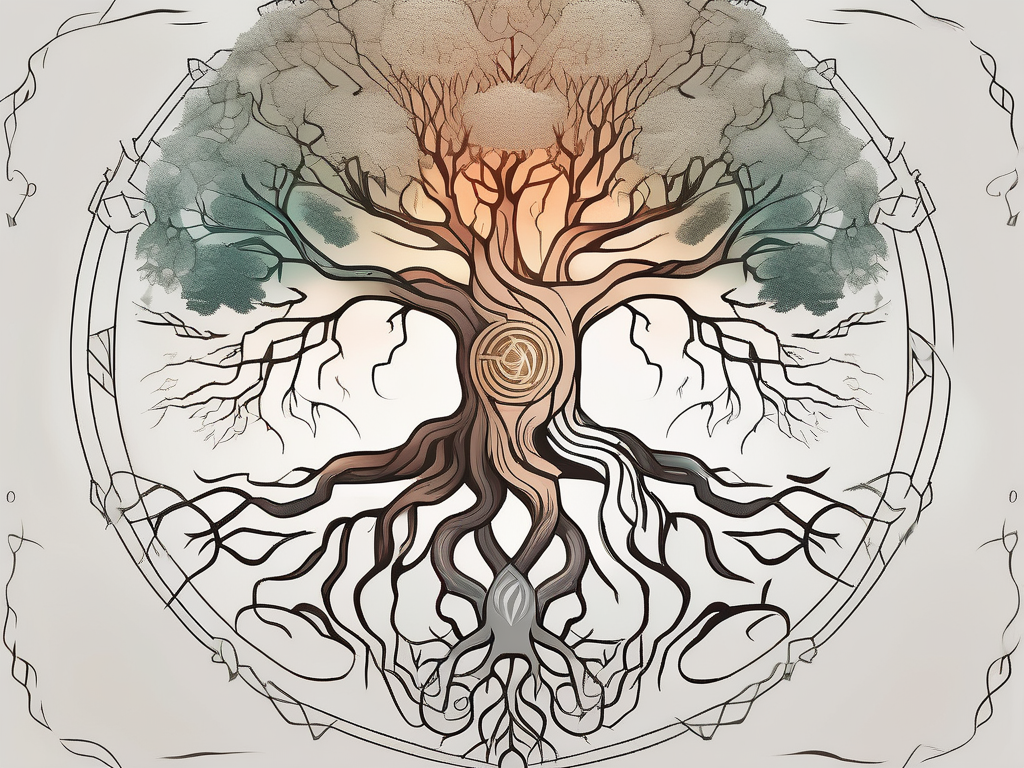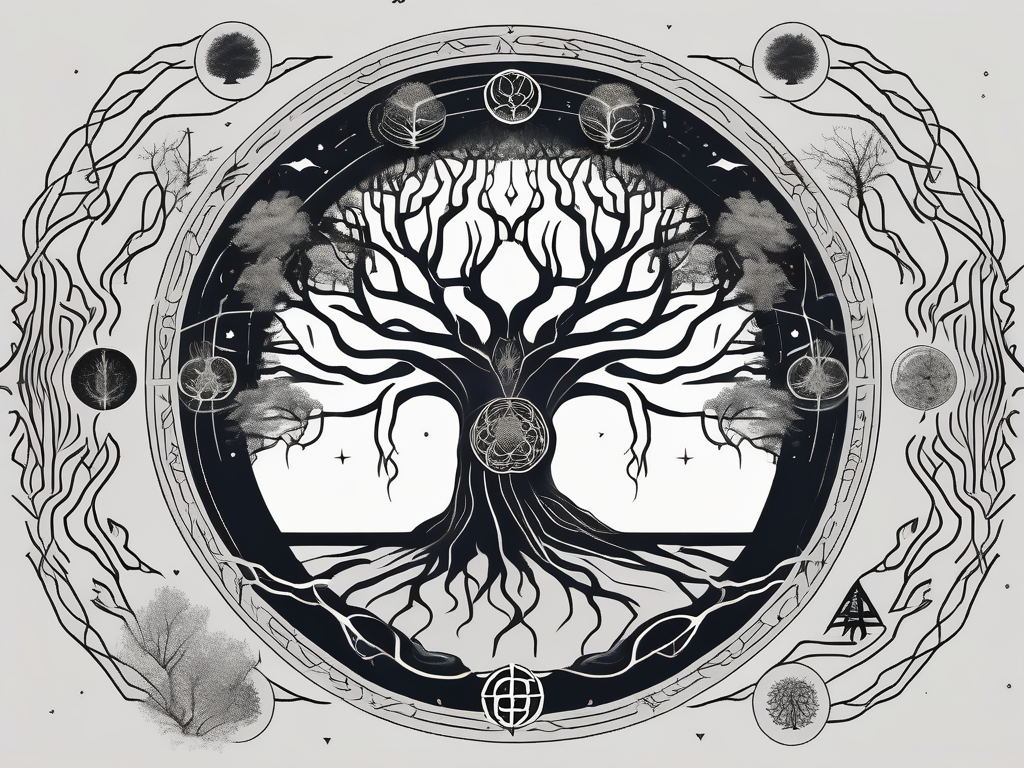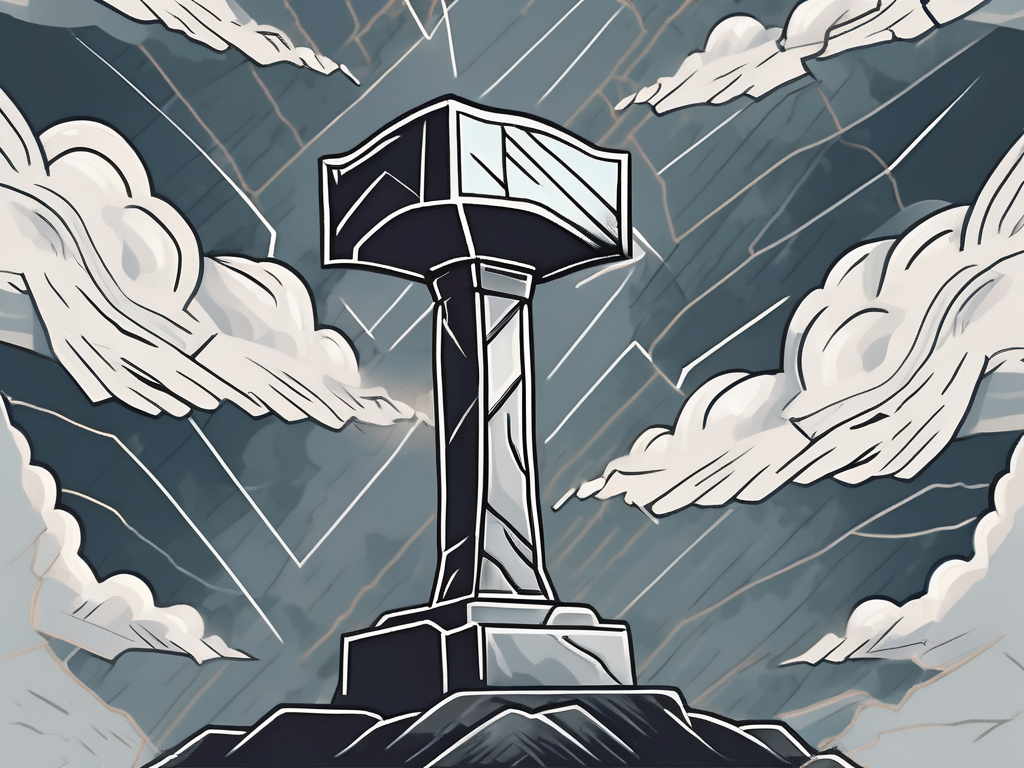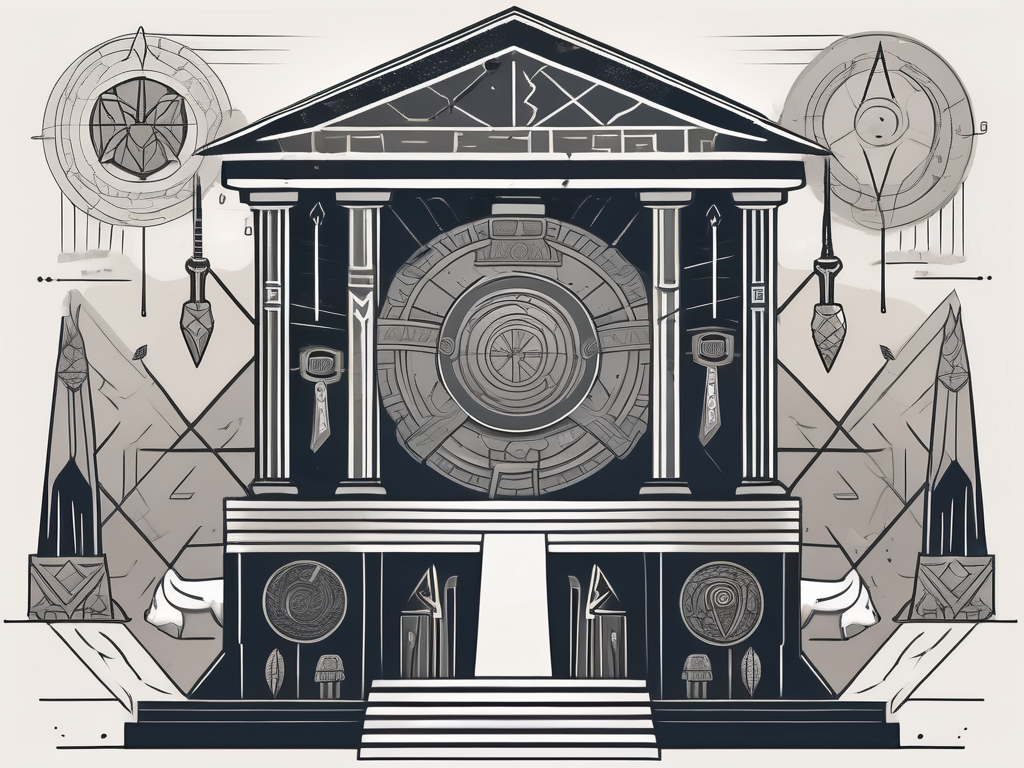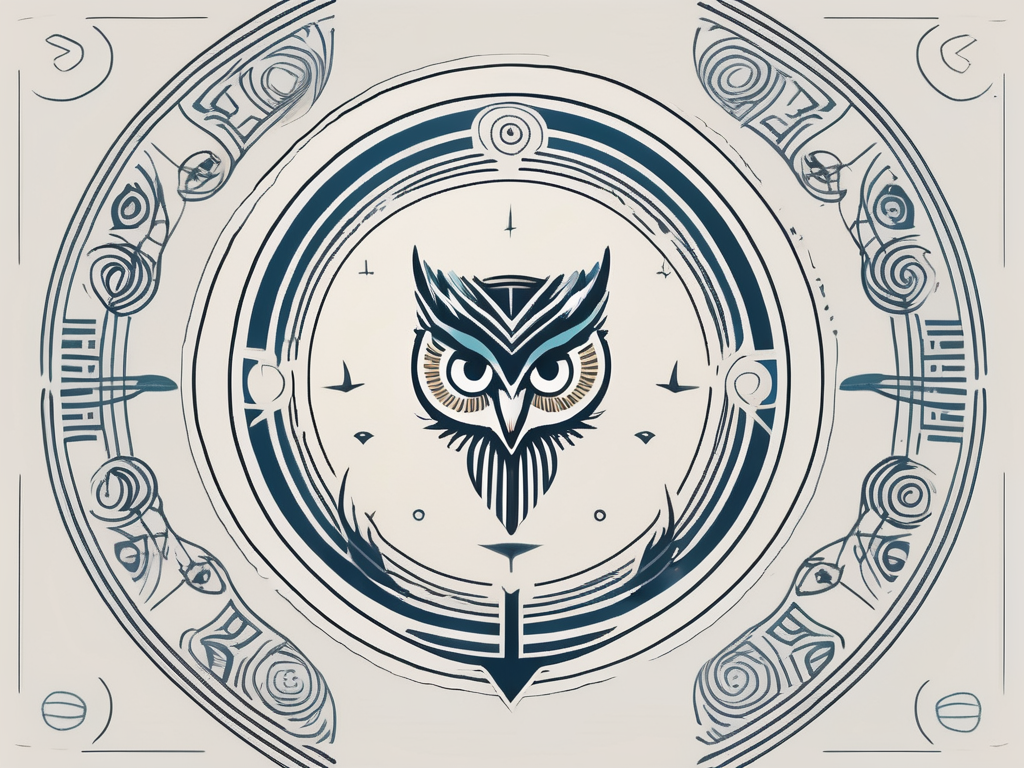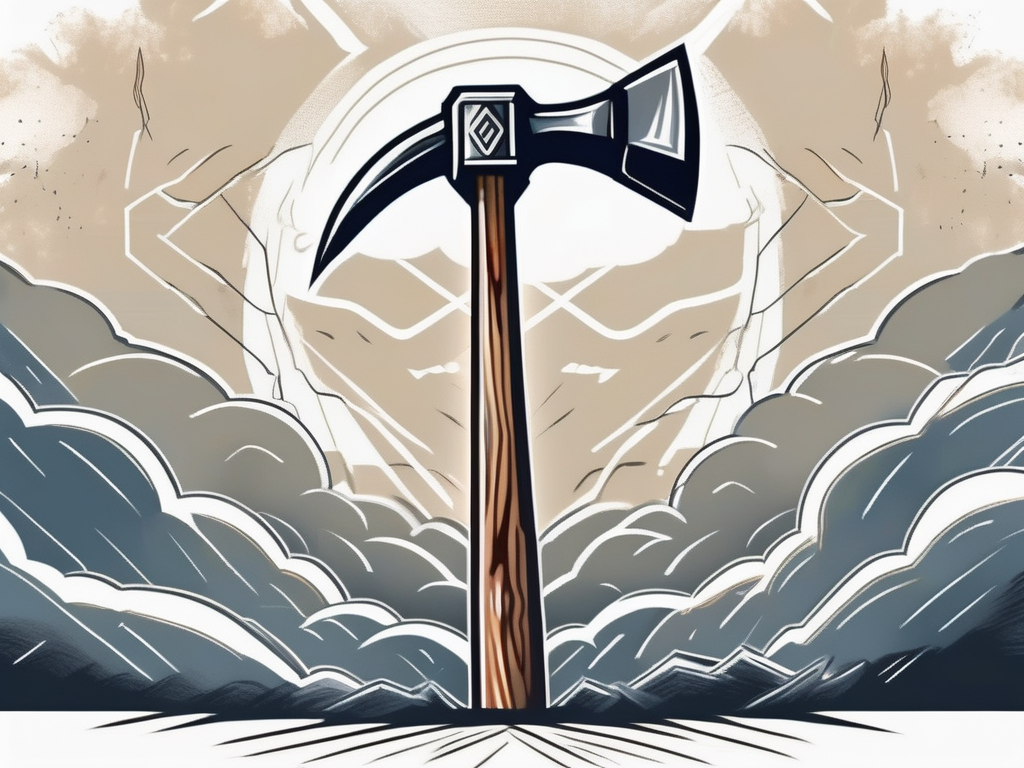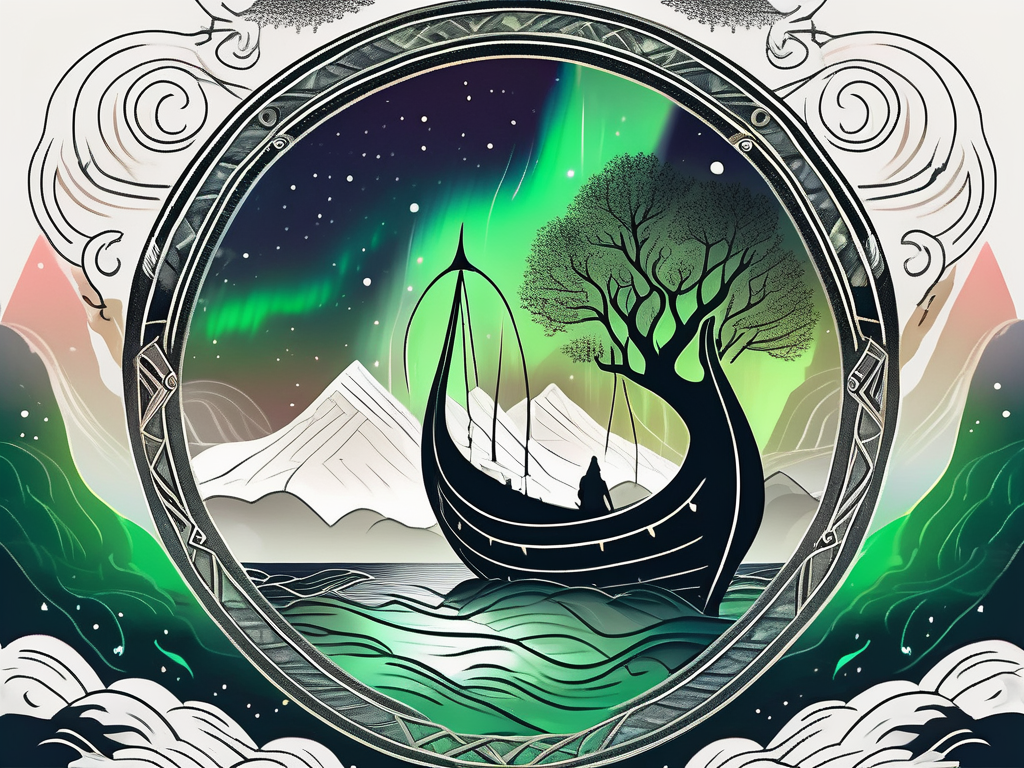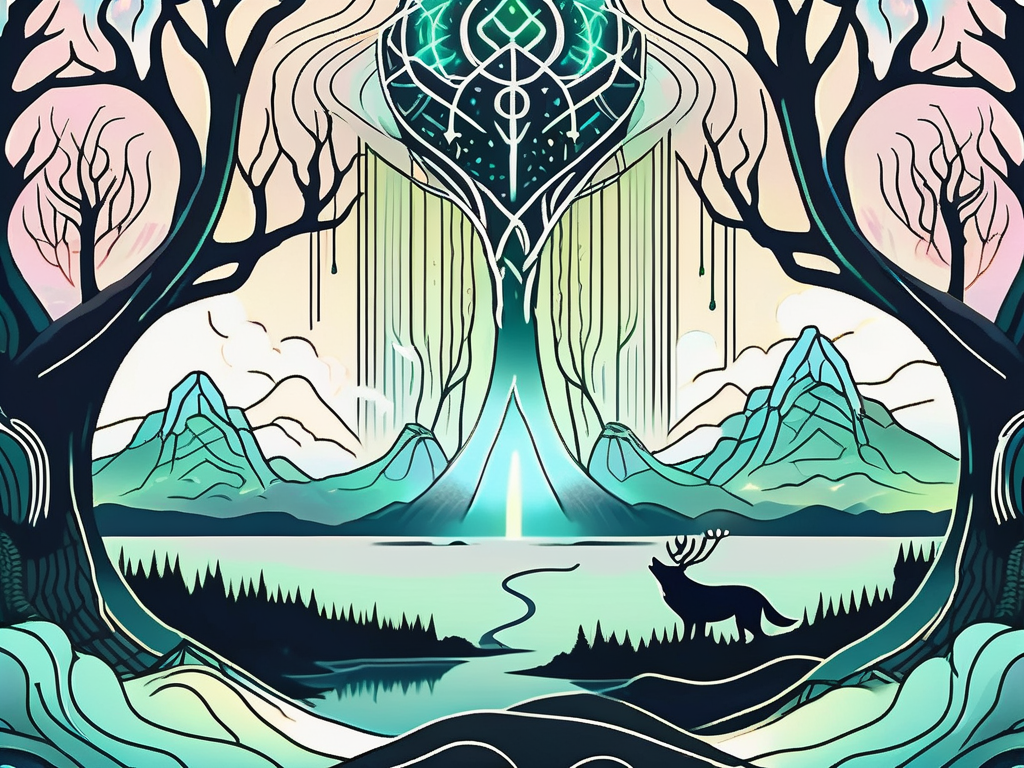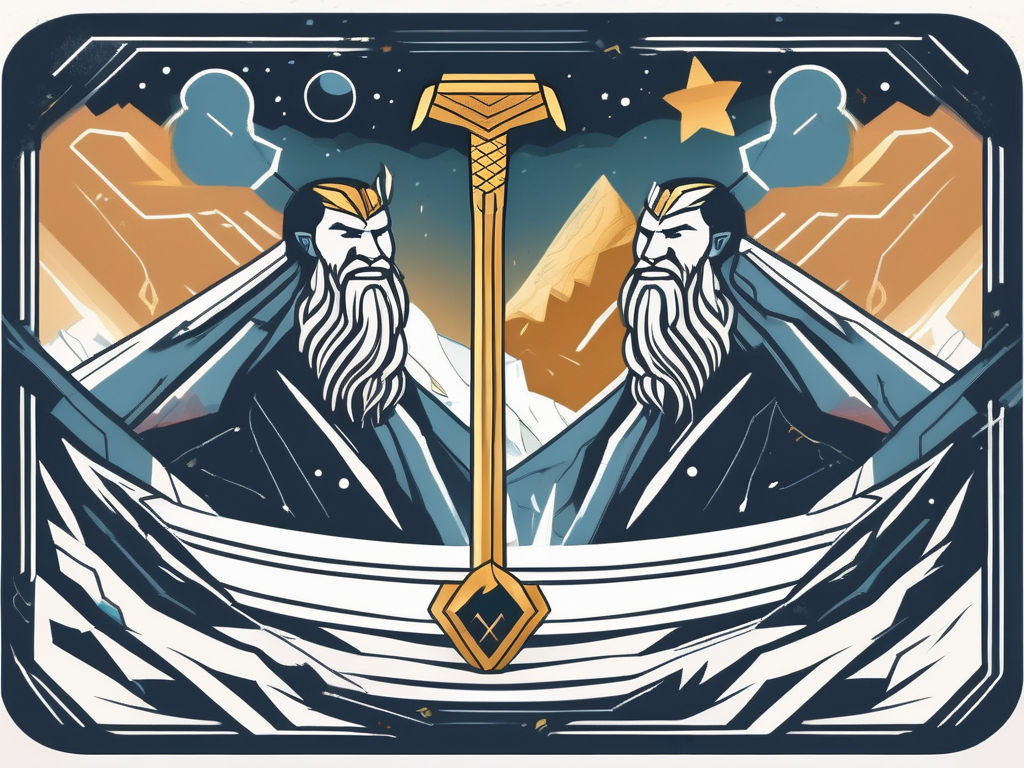Norse mythology is a fascinating subject with a rich tapestry of stories, gods, and realms. In this comprehensive guide, we will embark on a journey to explore the nine realms of Norse mythology. From the origins and significance of Norse mythology to the influence it has on modern culture, we will delve into the cosmology and detailed exploration of each realm. So, let’s set sail and venture into the realm of myths and legends!
Understanding Norse Mythology
The Origin and Significance of Norse Mythology
Before we can dive into the realms, it’s important to understand the origin and significance of Norse mythology. Norse mythology originated from the ancient beliefs of the Scandinavian and Germanic people. These ancient societies, living in a harsh and unforgiving environment, sought to make sense of the world around them. They observed the changing seasons, the power of nature, and the mysteries of life and death.
From these observations, the Norse people developed a complex and intricate mythology. It was a way to explain the creation of the universe, the gods and goddesses who ruled over it, and the fate that awaited them in the afterlife. The stories of Norse mythology were passed down through generations, woven into the fabric of their society.
What makes Norse mythology unique is its depiction of gods who are not all-powerful and invulnerable. Unlike other mythologies, where gods are often portrayed as untouchable beings, the gods of Norse mythology possess human-like qualities. They experience emotions such as love, anger, and jealousy, making their stories relatable to mortals. These tales of heroism, treachery, and destiny have captivated generations and continue to resonate with us today.
The Influence of Norse Mythology on Modern Culture
Norse mythology has left an indelible mark on our modern culture. Its influence can be seen in various forms of media, from movies to video games and even literature. One of the most notable examples is Marvel’s Thor franchise, which has brought Norse mythology to a mainstream audience. The character of Thor, the god of thunder, has become an iconic figure, captivating audiences with his strength and bravery.
Video games have also embraced the rich tapestry of Norse mythology. Games like God of War have taken players on epic adventures, immersing them in a world filled with gods, monsters, and ancient prophecies. These games not only entertain but also educate players about the rich mythological heritage of the Norse people.
Furthermore, Norse mythology’s portrayal of the afterlife has sparked our curiosity and imagination. The concept of Valhalla, a majestic hall where fallen warriors feast and battle eternally, has become iconic. It has found its way into popular culture, inspiring countless books, art, and even tattoos. The idea of an afterlife reserved for the brave and honorable has resonated with people throughout history, offering comfort and hope in the face of mortality.
In conclusion, Norse mythology is a fascinating and complex belief system that has shaped the cultural landscape of the Scandinavian and Germanic people. Its stories of gods and goddesses, heroes and villains, continue to captivate and inspire us. From its ancient origins to its enduring influence on modern culture, Norse mythology remains a testament to the power of storytelling and the enduring human fascination with the divine.
The Cosmology of Norse Mythology
Yggdrasil: The World Tree
At the heart of Norse cosmology stands Yggdrasil, the World Tree. This immense ash tree connects the nine realms, serving as a conduit for the gods, creatures, and humans to traverse between worlds. Its roots stretch deep into the soil, reaching unimaginable depths, while its branches reach high into the heavens, touching the celestial realms. Yggdrasil holds the fabric of the universe together, and without it, the realms would cease to exist.
Legend has it that Yggdrasil’s roots extend into three different realms. One root delves into Niflheim, the realm of primordial ice and mist. It is said that within this icy realm lies the source of all rivers, lakes, and oceans. Another root stretches into Jotunheim, the land of the giants. Here, the giants dwell, towering over the landscape with their immense size and strength. The third root finds its way into Asgard, the realm of the gods. Asgard is a place of divine splendor, where the Aesir gods reside and oversee the affairs of the cosmos.
The branches of Yggdrasil are equally fascinating. One branch extends into Alfheim, the realm of the light elves. This realm is known for its ethereal beauty, filled with shimmering light and enchanting music. Another branch reaches into Vanaheim, the realm of the Vanir gods. Vanaheim is a lush and fertile land, where the Vanir gods govern the forces of nature and fertility. The third branch leads to Midgard, the realm of humans. Midgard is a world of mortal beings, where humans live out their lives and strive to find their place in the grand tapestry of existence.
The Concept of Nine Realms
In Norse mythology, the universe consists of nine interconnected realms. Each realm has its own unique characteristics, inhabitants, and landscapes. These realms exist in a delicate balance, with natural forces shaping their interactions and influencing the lives of those who dwell within them.
One of the realms is Svartalfheim, the realm of the dark elves. Svartalfheim is a mysterious and shadowy place, where the dark elves practice their ancient arts of magic and craftsmanship. It is said that the dark elves are master artisans, creating exquisite works of art and powerful enchanted items.
Another realm is Nidavellir, the realm of the dwarves. Nidavellir is a subterranean world, filled with vast underground caverns and mines. The dwarves are renowned for their exceptional skills in mining and metallurgy, crafting legendary weapons and treasures for the gods and heroes.
Muspelheim, the realm of fire, is a place of intense heat and flames. It is inhabited by fire giants and fire demons, who harness the power of fire to create chaos and destruction. The fire giants are fearsome warriors, wielding flaming swords and unleashing infernal magic.
Jotunheim, the land of the giants, is a realm of towering mountains and frozen landscapes. The giants of Jotunheim are formidable beings, possessing incredible strength and endurance. They are often depicted as adversaries of the gods, engaging in epic battles that shape the fate of the cosmos.
Helheim, the realm of the dead, is a gloomy and desolate place. It is where those who die of old age or illness are destined to go. Helheim is ruled by Hel, the goddess of the dead, who presides over the souls of the departed. The realm is inhabited by various spirits and shades, forever trapped in a state of melancholy.
Lastly, there is Vanaheim, the realm of the Vanir gods. Vanaheim is a realm of abundant nature and fertility, where the Vanir gods govern the cycles of life and growth. It is a place of harmony and prosperity, where the forces of nature are revered and celebrated.
Detailed Exploration of the Nine Realms
Asgard: The Realm of the Aesir Gods
Asgard, the realm of the Aesir gods, is known for its majestic halls and towering palaces. Here, Odin, Thor, and the rest of the Aesir reside, overseeing the affairs of the cosmos. Asgard is an eternal battleground, where gods and giants clash in epic battles that shape the destiny of the realms.
Midgard: The Realm of Humans
Midgard, also known as Earth, is the realm of humans. It is a vast and diverse realm, inhabited by ordinary mortals who live their lives unaware of the realms that exist beyond their own. Midgard is a realm where bravery and heroism shine through, as humans face both natural and supernatural challenges.
Jotunheim: The Realm of the Giants
Jotunheim is a harsh and unforgiving realm, inhabited by the fearsome Jotnar, the giants of Norse mythology. These giants are powerful and often portrayed as adversaries to the gods, representing the chaotic and untamed forces of nature. In Jotunheim, colossal mountains loom, blizzards rage, and danger lurks at every turn.
Vanaheim: The Realm of the Vanir Gods
Vanaheim is home to the Vanir gods, an enigmatic and lesser-known pantheon compared to the Aesir. The Vanir are associated with fertility, nature, and magic. Vanaheim is a realm of vibrant forests, lush meadows, and misty lakes – a place where the beauty of nature is celebrated, and ancient secrets are guarded.
Alfheim: The Realm of the Light Elves
Alfheim is a realm of ethereal beauty, inhabited by the light elves. These mythical creatures are known for their grace, wisdom, and mastery of light magic. Alfheim is a realm of shimmering light, enchanted gardens, and breathtaking landscapes. It is said to be a realm of harmony and tranquility, untouched by the chaos that dwells in other realms.
Svartalfheim: The Realm of the Dwarves
Svartalfheim is a realm hidden deep underground, inhabited by the skilled and cunning dwarves. This realm is abundant in precious metals and gemstones, making the dwarves renowned craftsmen and blacksmiths. Svartalfheim is a labyrinthine network of tunnels and caverns, where the dwarves toil and create magnificent treasures that are sought after by gods and mortals alike.
Helheim: The Realm of the Dead
Helheim, the realm of the dead, is a place where souls who did not die in battle go after death. It is ruled by Hel, the daughter of Loki, who welcomes the souls of the deceased with open arms. Helheim is a somber and desolate realm, with vast stretches of icy wastelands and foggy plains. It is a place of reflection and rest for those who have departed the realm of the living.
Niflheim: The Realm of Ice and Mist
Niflheim is a realm of eternal winter and icy landscapes. This frozen realm is shrouded in mist and darkness, making it a treacherous place to navigate. Creatures of ice and frost roam its desolate plains, waiting for the right moment to strike. Niflheim is a realm that reminds us of the unforgiving nature of winter and the power of the elements.
Muspelheim: The Realm of Fire
Muspelheim is a realm of perpetual flames and searing heat. It is said to be the home of the fire giants and the primordial fire itself, Surtr. Muspelheim is a realm of destruction and chaos, radiating intense heat that threatens to consume everything in its path. It symbolizes the destructive force of fire and the unpredictable nature of chaos.
And there you have it – a comprehensive guide to the nine realms of Norse mythology. From the majestic halls of Asgard to the frozen wastelands of Niflheim, each realm holds its own unique wonders and dangers. These realms, along with the gods, creatures, and mortals who inhabit them, continue to inspire and captivate us with their timeless tales. So, embrace the myths, embark on your own personal journey through the vast cosmos of Norse mythology, and let these ancient stories ignite your imagination.
